Wanders through a hyperreal pandemic Rome.
Rome is very busy at the moment. Except for the occasional mask (FTTP2/N95 are required on all public transport and in the Vatican Museums, though many Italians are still warily also wearing masks inside shops and churches where they’re not required by law), it is as if nothing had ever happened. Which makes it even odder to look back at photographs of 2020 and early 2021.
The first ltalian lockdown (which we then called “quarantena”: the Anglo-centric international lexicon of this pandemic was not yet established) spanned March, April, and the first days of May of 2020. Leaving the house required a written and signed justification lest the police ask for it, and horizons shrank to local food shops and the occasional solo neighbourhood walk. The Colosseum, three kilometres from my apartment, might as well have been on the moon, and central Rome had its glorious spring with barely anybody to watch.
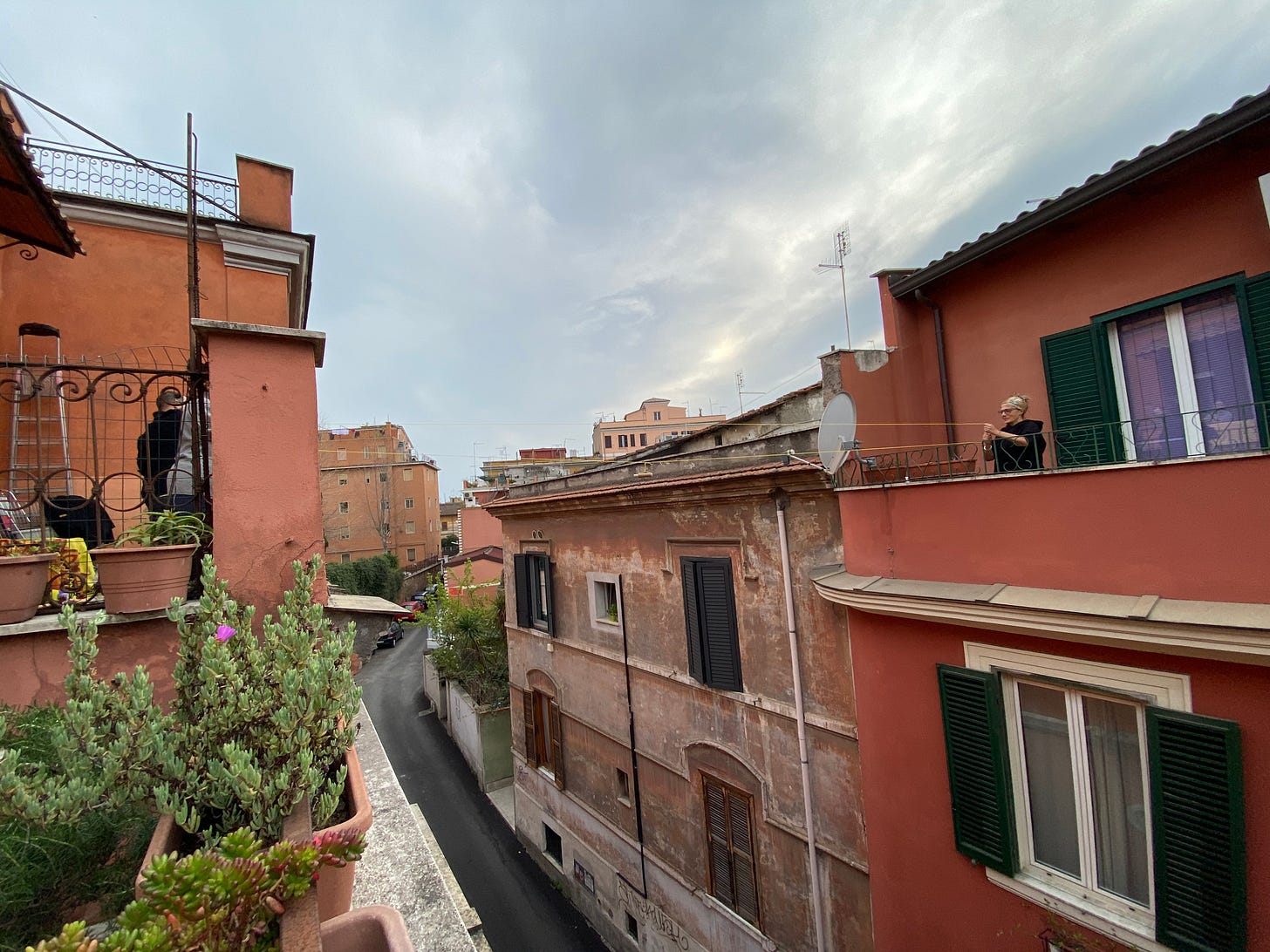
A year later, in Spring 2021 as vaccination began in earnest here, there was a “lockdown lite”. Bars and restaurants were closed, travel outside the city limits wasn’t allowed, and there was a 10pm curfew, but otherwise movement in the city was unfettered. A vast difference.
Each week I prepared a new subject for my online talks (after the summer I will be resuming occasional online talks and so far I’m up to seventy-five different subjects; a full list is here). I gave the first outing of each week’s subject on Wednesday evenings and because all work (in my experience, at least) expands to occupy the time available, I’d spend most of the day inside finishing up writing and organising my photos for the talk at seven o’clock.
Among the umpteen things that pandemic life has taught us is the gradual manner in which we normally conclude our social interactions. Clicking “End Meeting” offered a rather bleak and instant deflation to those jolly and convivial Q&As.
Even after months of practice, the nervousness provoked by the first outing of a new talk required a little decompression. So after the talk and before supper I’d go for a walk, sometimes in the neighbourhood (a favoured route was via Santa Croce and San Giovanni to the Colosseum), or sometimes I’d ride my Vespa the fifteen minutes into the centre of town.
Those evenings were among the most magical and curious of the pandemic. In pre-Covid times, early morning and late night midweek walks in the quiet months of November or February were always a treat: a special glimpse of Rome putting on its show just for me. But this wasn’t that. There wasn’t that slightly smug feeling of having beaten the “system”. It was very odd indeed. April evening air, warm with the scent of wisteria, doesn’t compute in an empty city; looking at my watch to see it was 9 o’clock–the time self-respecting Romans start thinking about sitting down for dinner–was a jolt when all around felt like the dead moments just before dawn.
Even by day the paraphernalia of tourism was gone, after all there weren’t any tourists at all. There were no stalls and shops festooned with tat; no luminous ice-cream sold from windows flickering with removable LED signs to bypass city legislation. It all looked like a film set. Later in the month, walking through piazza di Spagna one midweek afternoon where the annually placed pots of azaleas waited to bloom for almost no-one, I was reminded of the scene in the Talented Mr Ripley where Tom Ripley lurks on the Spanish Steps to avoid blowing his cover. This glorious piece of eighteenth-century town planning as the backdrop to the banal details of daily life was by its very nature extraordinary. It felt improbably, hyper-, real; like a movie.
People running errands on bicycles rode past the fountain, earnest seminarians walked by in eager conversation. Not far away one day I saw a handful of government employees not working from home eating their sandwiches perched on a railing with their backs to the Trevi Fountain, as it gushed away while no one took any notice. There was no one to watch this extraordinary spectacle of the everyday in its effervescently Late Baroque setting. And so the April azaleas on the Steps came and went, and barely anyone saw.
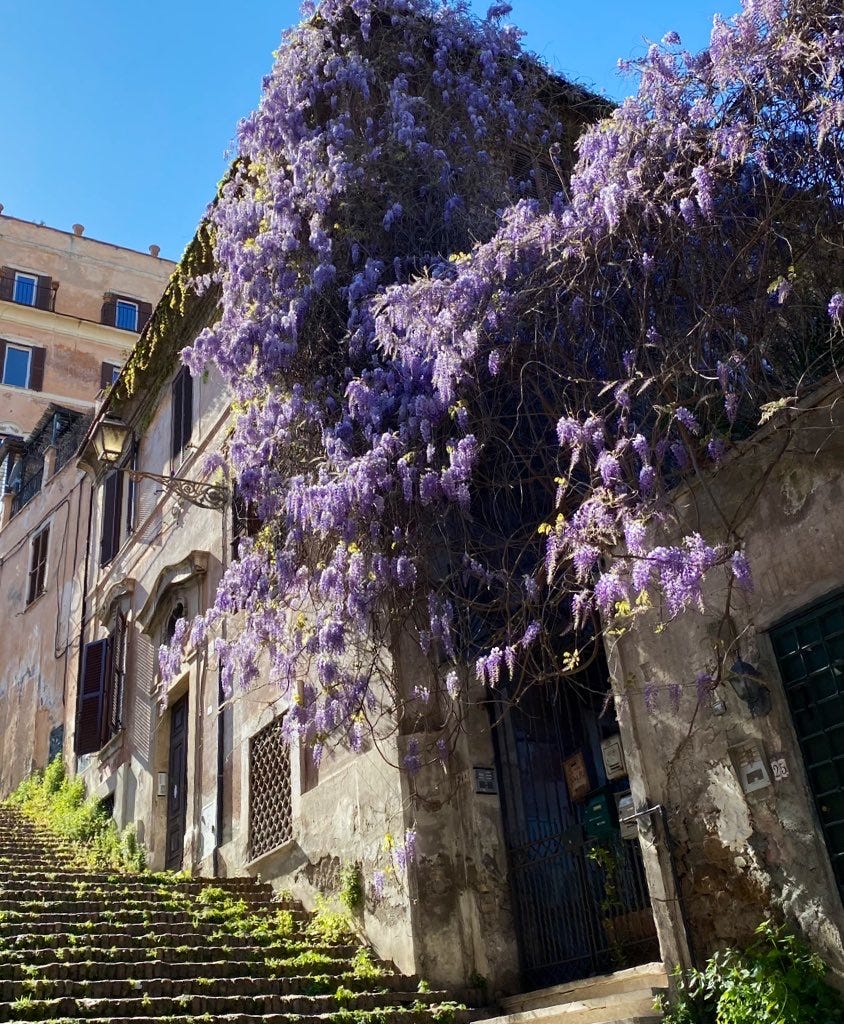
If the city had cinematic overtones during the day, then at night the monuments–illuminated for no one–took on an even more dramatic, dreamlike quality.
Rome is a city which has been showing off for over two millennia. Whether under the banner of Empire or of Church–whether for citizens or for pilgrims–showing off is what Rome does.
It transpired in the last part of the first quarter of the twenty-first century that the show carries on even when there’s almost no one to watch; Rome shows off because it is part of her soul, audience or not. I feel enormously privileged, amid the complexities of the last couple of years, to have been able to see it. The dark and silent streets of ancient monuments and elegant churches reminded that Rome has seen it all, that this too will pass. And so I took it all in, after my talks on Wednesday evenings, before hurrying home before curfew for a late supper.


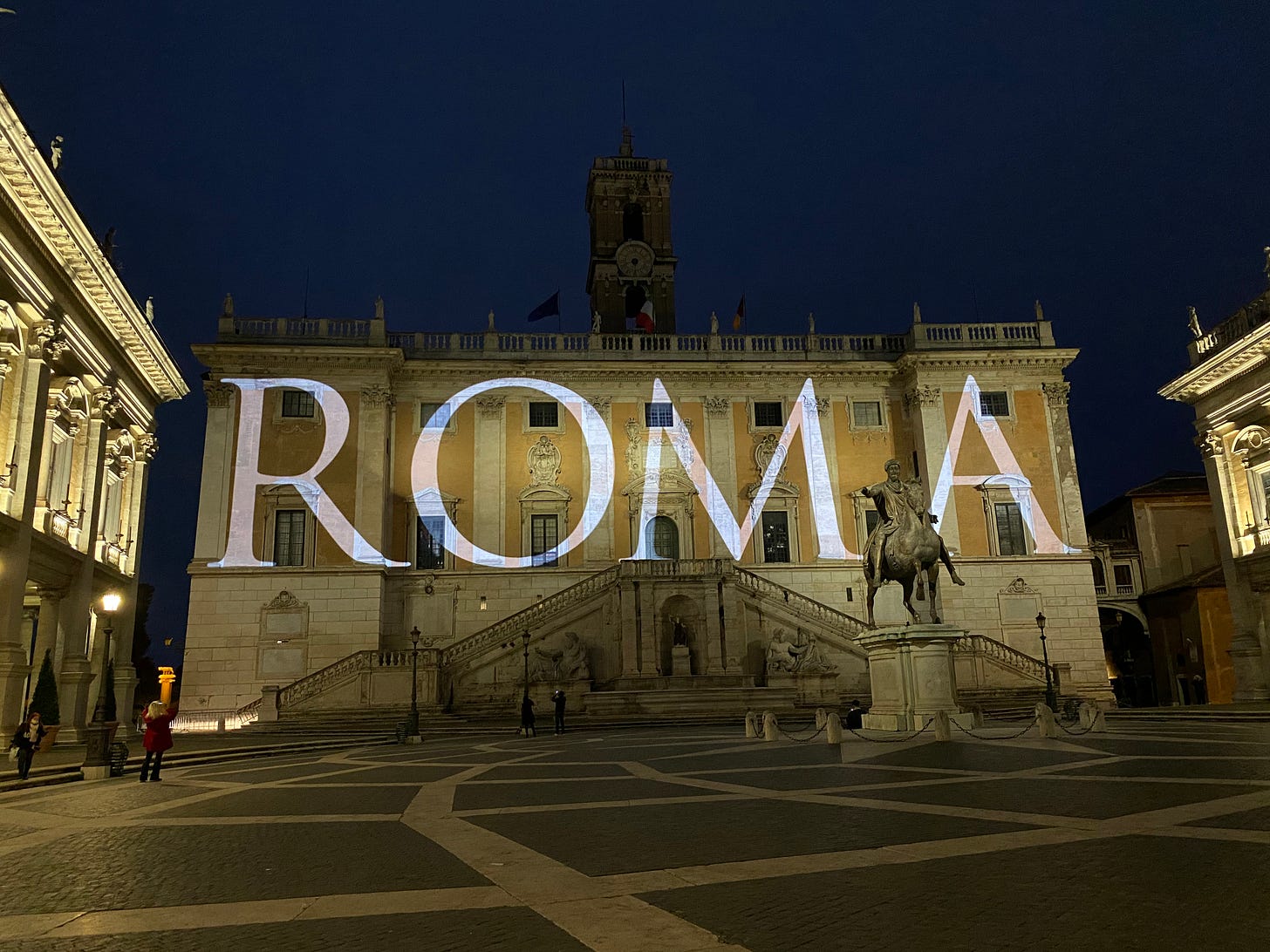
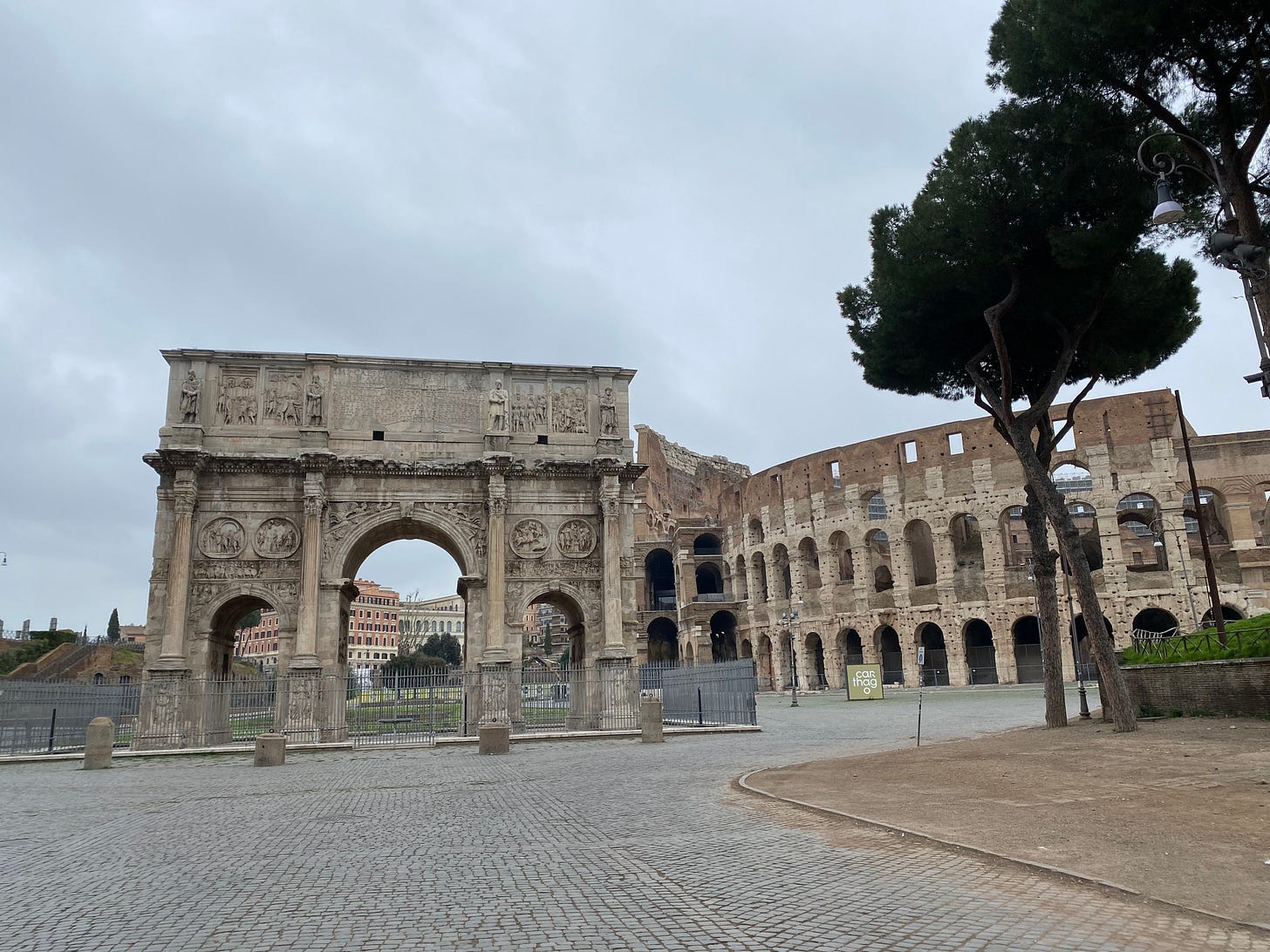

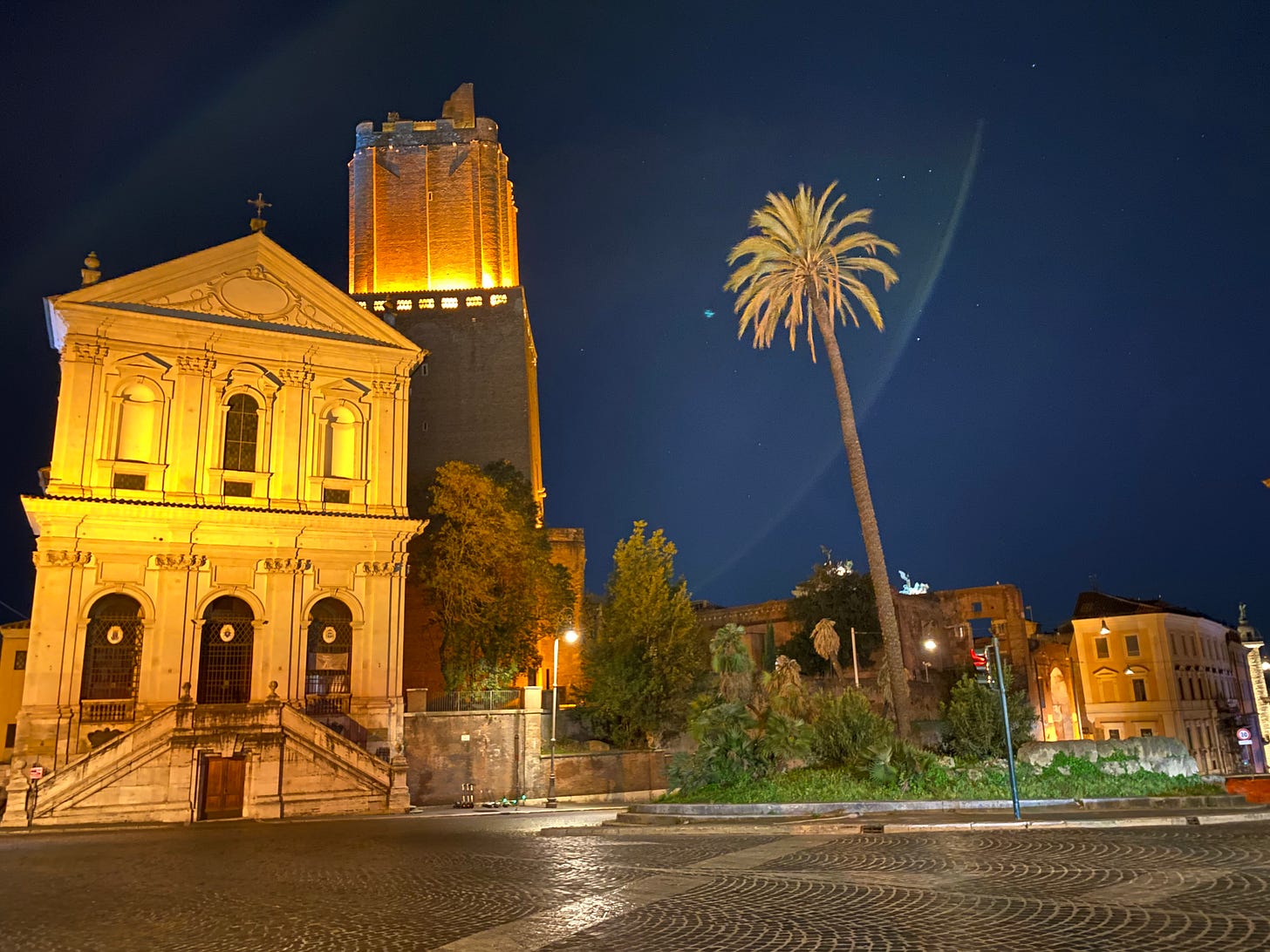
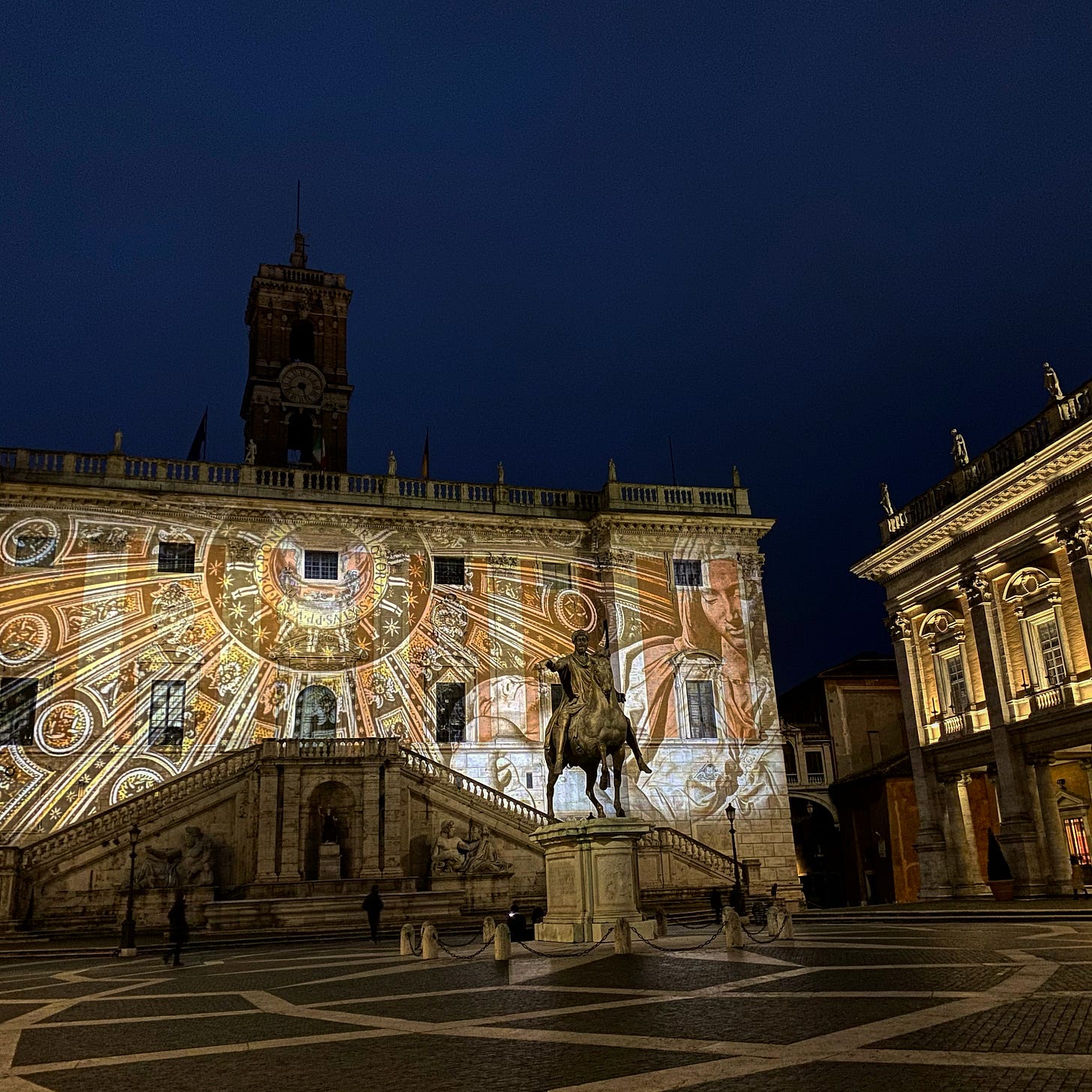
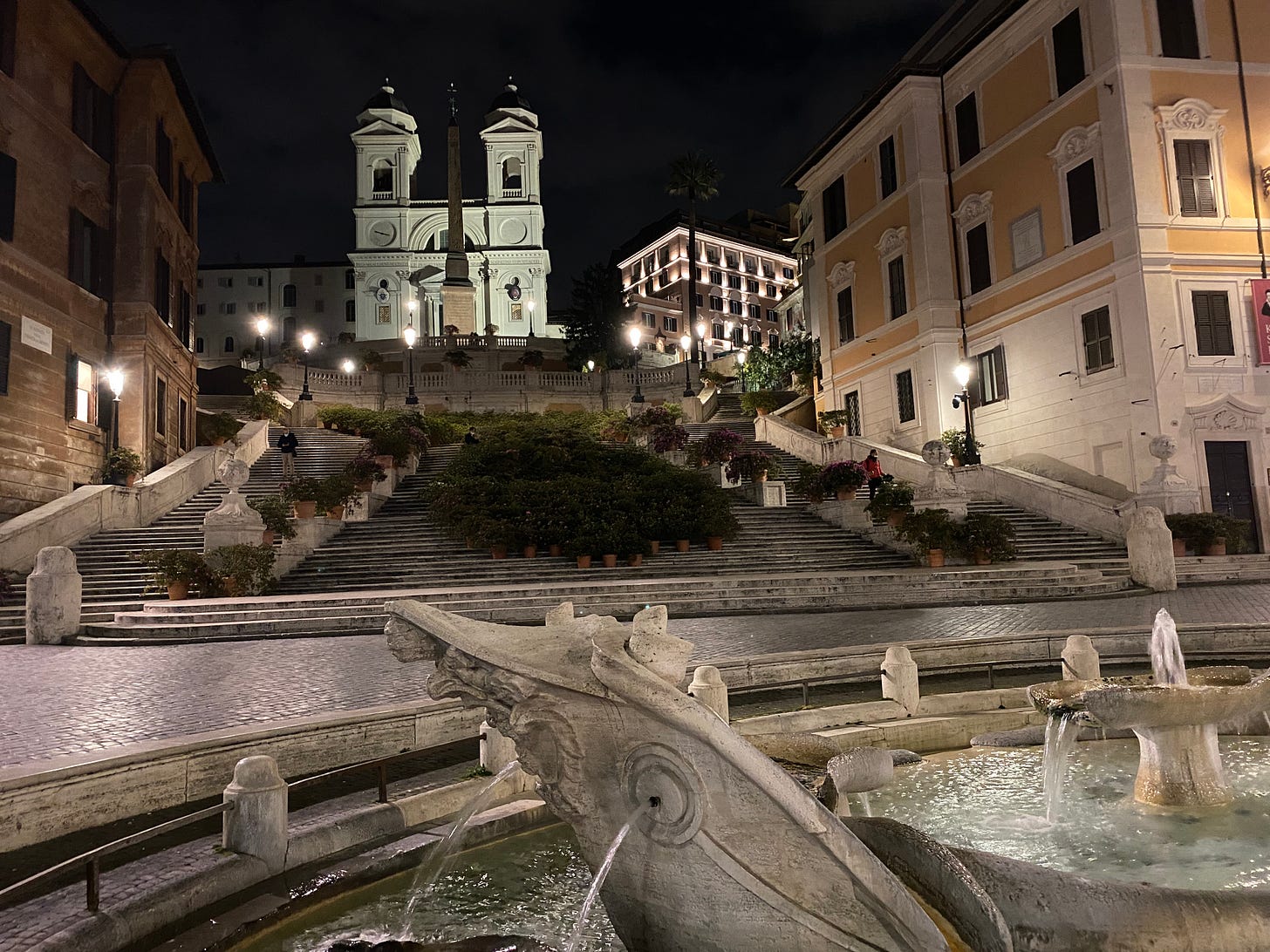
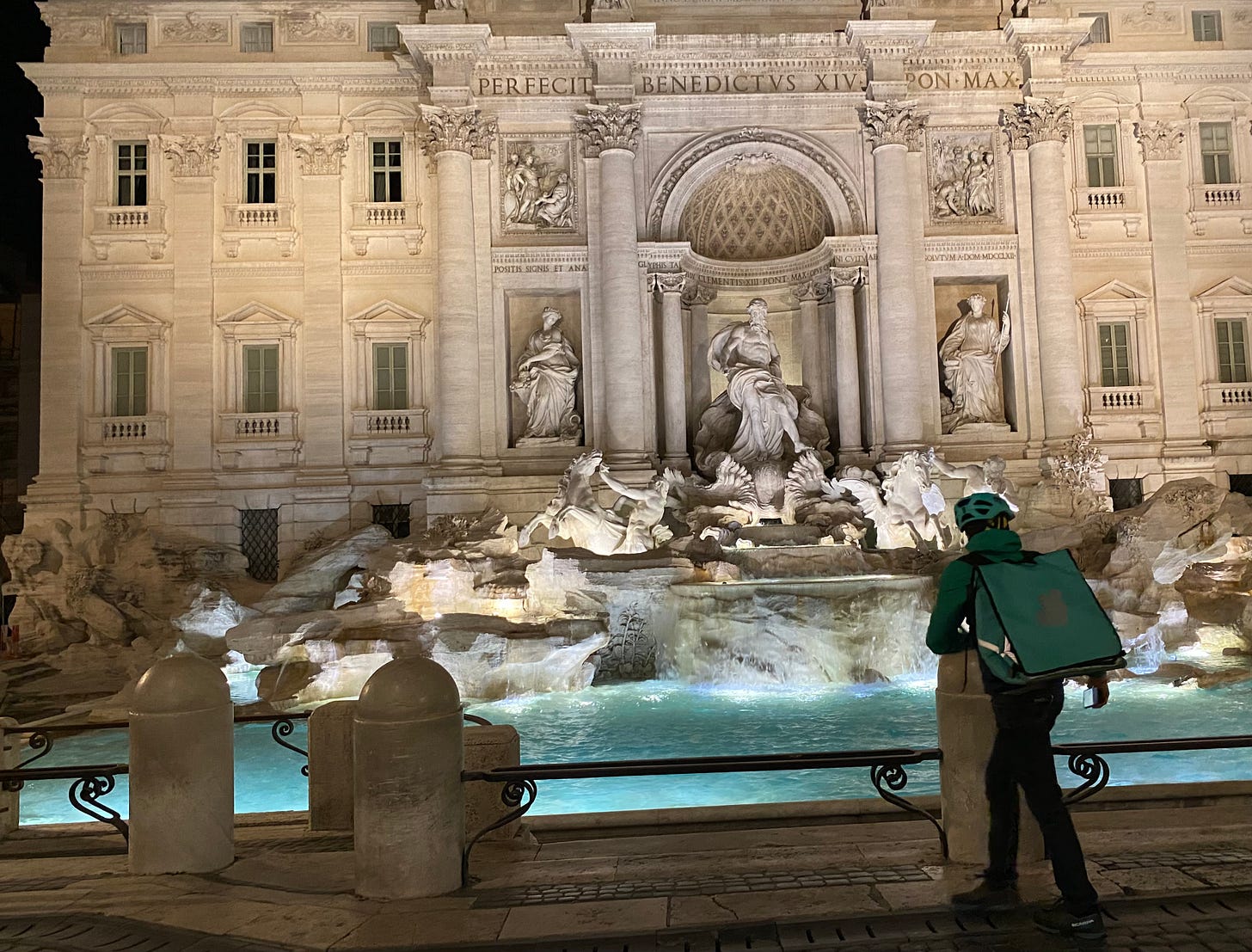



Just lovely.
Thank you for sharing, Agnes. You live in my favourite city🧡